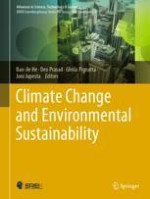2022 | OriginalPaper | Chapter
Is It Possible to Achieve Carbon Neutrality in Palm Oil Production?
Authors : Joni Jupesta, Keigo Akimoto, Rizaldi Boer
Published in: Climate Change and Environmental Sustainability
Publisher: Springer International Publishing
Activate our intelligent search to find suitable subject content or patents.
Select sections of text to find matching patents with Artificial Intelligence. powered by
Select sections of text to find additional relevant content using AI-assisted search. powered by
